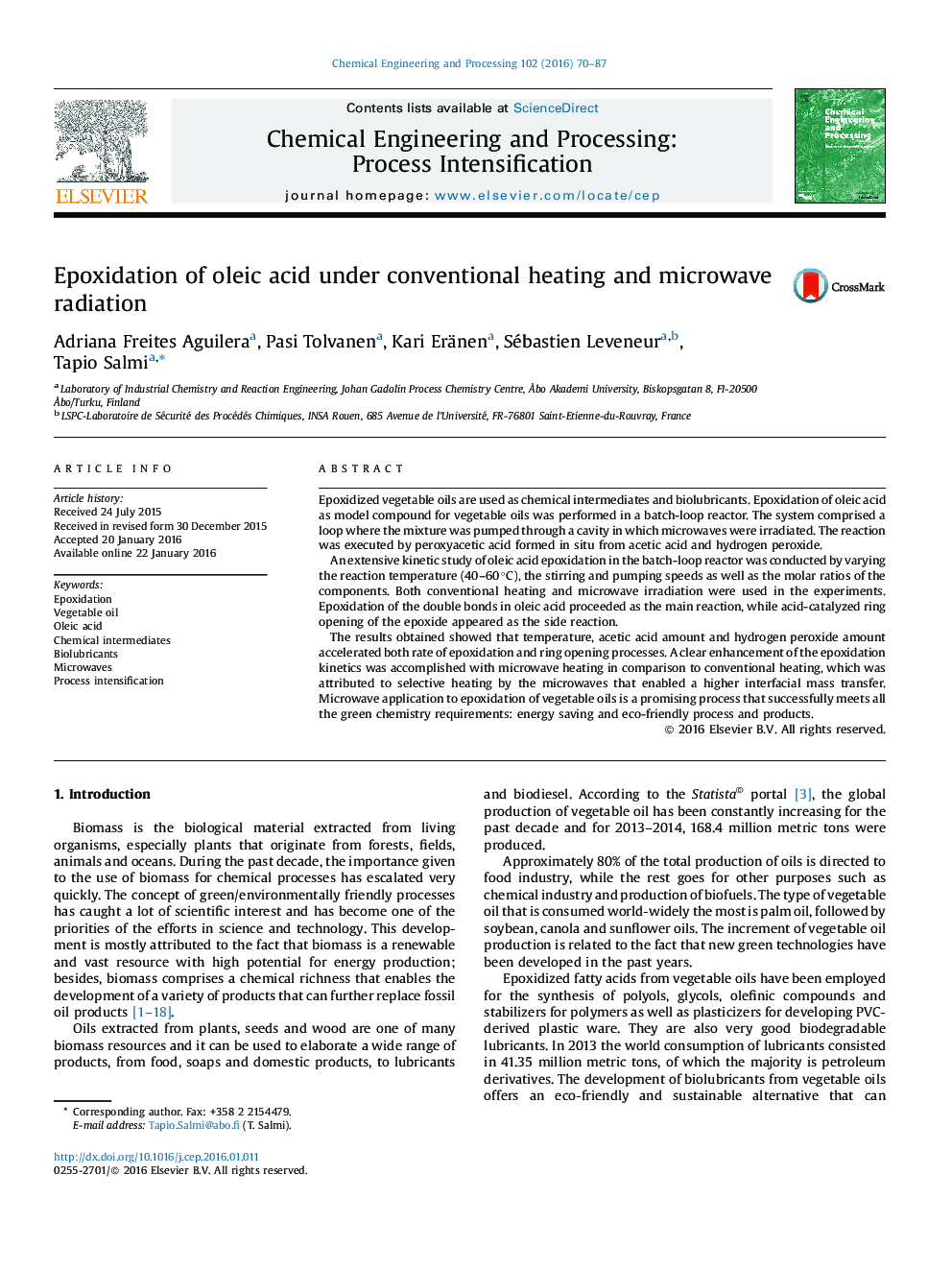| Article ID | Journal | Published Year | Pages | File Type |
|---|---|---|---|---|
| 687902 | Chemical Engineering and Processing: Process Intensification | 2016 | 18 Pages |
•A new microwave reactor system was constructed for fatty acid epoxidation.•An extensive series of epoxidation experiments were conducted.•A clear enhancement of the epoxidation process was obtained with microwaves.
Epoxidized vegetable oils are used as chemical intermediates and biolubricants. Epoxidation of oleic acid as model compound for vegetable oils was performed in a batch-loop reactor. The system comprised a loop where the mixture was pumped through a cavity in which microwaves were irradiated. The reaction was executed by peroxyacetic acid formed in situ from acetic acid and hydrogen peroxide.An extensive kinetic study of oleic acid epoxidation in the batch-loop reactor was conducted by varying the reaction temperature (40–60 °C), the stirring and pumping speeds as well as the molar ratios of the components. Both conventional heating and microwave irradiation were used in the experiments. Epoxidation of the double bonds in oleic acid proceeded as the main reaction, while acid-catalyzed ring opening of the epoxide appeared as the side reaction.The results obtained showed that temperature, acetic acid amount and hydrogen peroxide amount accelerated both rate of epoxidation and ring opening processes. A clear enhancement of the epoxidation kinetics was accomplished with microwave heating in comparison to conventional heating, which was attributed to selective heating by the microwaves that enabled a higher interfacial mass transfer. Microwave application to epoxidation of vegetable oils is a promising process that successfully meets all the green chemistry requirements: energy saving and eco-friendly process and products.
